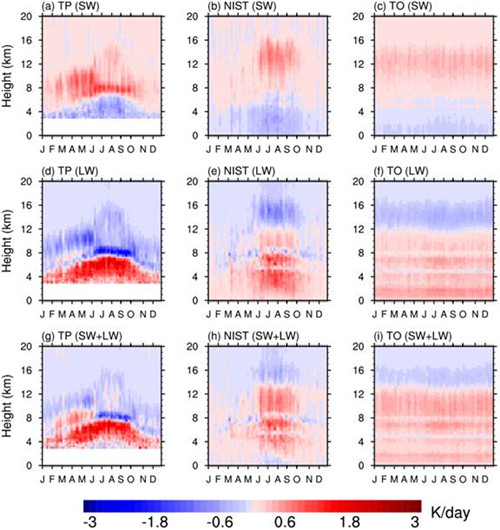Cloud plays an important role in the energy cycle and balance of the Earth's climate system. The Tibetan Plateau, also known as "the Roof of the World" with an average elevation exceeding 4,500 metres (14,800 ft), significantly affects the atmospheric circulation and Asian climate. Therefore, studying the vertical structure of cloud and its radiative effects (CRE) over this region is of great significance. 
Mount Namjagbarwa, located in Nyingchi Region of Tibet Autonomous Region, has a reputation as a Paradise in the Clouds. (Photo/Chinapic)
Recently, Dr. YAN Yafei, Prof. LIU Yimin and Prof. LU Jianhua from State Key Laboratory of Numerical Modeling for Atmospheric Sciences and Geophysical Fluid Dynamics (LASG), Institute of Atmospheric Physics (IAP) have analyzed the vertical structure of clouds, its connection with precipitation and CRE over the TP based on CloudSat and Cloud-Aerosol Lidar and Infrared Pathfinder Satellite Observations (CALIPSO) products and the Tropical Rainfall Measuring Mission (TRMM) precipitation data. Meanwhile, these characteristic over the TP have been compared with its neighboring land (NIST) and tropical oceans (TO).
Unique characteristics of cloud vertical structure and CRE over the TP are found. The cloud amount shows seasonal variation over the TP, which presents a single peak (located in 7-11 km) during January to April and two peaks (located in 5-8 km and 11-17 km separately) after mid-June, and then resumes to one peak (located in 5-10 km) after mid-August.
Additionally, Topography-induced restriction on moisture supply leads to a compression effect on clouds, i.e., the reduction in both cloud thickness and cloud layer numbers, over the TP. The topography-induced compression effect is also shown in the range in the variation of cloud thickness and cloud layer numbers corresponding to different precipitation intensity, which is much smaller over the TP than its neighboring regions.

Figure 1. The pentad-averaged cloud amount over the TP (a), NIST (b) and TO (c). Unit: %.

Figure 2. The seasonal cycle of the vertical profile of shortwave (SW, upper panel), longwave (LW, middle panel) and total (SW+LW, lower panel) cloud radiation effects (CRE) per unit mass over the TP (left), NIST (middle) and TO (right). Positive (negative) values represent heating (cooling) rate. Unit: K/day.
What’s more, the longwave CRE in the atmosphere over the TP was found to be a net cooling effect, while it is warming effect over the TO. It is also found that the vertical structure of CRE over the TP is unique compared to other regions: there exists a strong cooling layer of net CRE at the altitude of 8 km, from June to the beginning of October; the net radiative heating layer above the surface is shallower but stronger underneath 7 km and with a stronger seasonal variation over the TP.
This work may indicate unique features of the interaction among cloud, radiative, and the large-scale circulation, distinct from that in other regions such as over tropical ocean. There are still very few researches in this regard due to the lack of direct observations. The phenomena revealed in this paper and ongoing observational research may promote our understanding of this important topic and the model simulation of cloud vertical structure and also the precipitation.
This research is published in the Journal of Geophysical Research: Atmospheres (http://onlinelibrary.wiley.com/doi/10.1002/2015JD024591/full).
Contact: Prof. LIU Yimin, lym@lasg.iap.ac.cn








